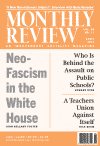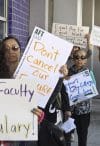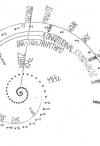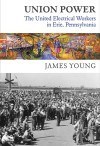Labor

U.S. immigration has been the subject of furious debates for decades. On one side, politicians and the media talk about aliens and criminals, with calls to “deport them all.” On the other side, some advocates idealize immigrants and gloss over problems associated with immigration. Dialogue becomes possible when we dig deeper and ask tough questions: Why are people in other countries leaving their homes and coming here? What does it mean to be “illegal”? How do immigration raids, prisons, and border walls impact communities? Who suffers and who profits from our current system—and what would happen if we transformed it? | more…

Capitalism was a radical break with the past: for the first time, production of basic goods was driven by the accumulation of wealth for its own sake, and not primarily to satisfy human needs. Likewise, we are alienated from the natural world, as the products of our own labor are no longer under our control. Our very perception of nature is shaped by an economic system that treats “the environment” as a collection of commodities to be exploited. | more…

One would think that with such an anti-worker president, the U.S. labor movement would be primed to do all in its power to mobilize union members to resist, much as millions of people have protested Trump since the day he took office. But such has not been the case. | more…

Organized Labor and the Crisis at City College of San Francisco
How did a community college that had managed to serve and retain most of its student population and remain fiscally sound amid a recession and a budget crisis become the target of condemnation by accrediting authorities? The answer involves a disastrous collision of corporate education reform, administrative arrogance, and timid, undemocratic union leadership. | more…

The Social Relations of Space Travel
As astronauts penetrate ever further into the cosmos, how are their bodies and subjectivities being transformed? While space travel remains governed by mechanisms of power and domination that tend to treat astronauts as tools, the practice of “space medicine” is now beginning to interact with astronauts’ bodies in a more multidirectional, dialectical fashion. | more…

Ahmed White’s vivid and deeply researched account of the Little Steel strike of 1937 makes an important contribution to our understanding of U.S. labor history, union organizing, and class conflict. It illustrates the tactical complexity of strikes, reveals the power and ruthlessness of employers, and demonstrates the risks of relying on the state to secure justice for working people. | more…

If you're lucky enough to be employed today in the United States, there's about a one-in-ten chance that you're in a labor union. And even if you’re part of that unionized 10 percent, chances are your union doesn't carry much economic or political clout. But this was not always the case, as historian and activist James Young shows in this vibrant story of the United Electrical Workers Union. The UE, built by hundreds of rank-and-file worker-activists in the quintessentially industrial town of Erie, Pennsylvania, was able to transform the conditions of the working class largely because it went beyond the standard call for living wages to demand quantum leaps in worker control over workplaces, community institutions, and the policies of the federal government itself. | more…
Marge Piercy is the author of nineteen books of poetry, most recently Made in Detroit (Knopf, 2015). Her first short story collection, The Cost of Lunch, Etc., was published in 2014 by PM Press. | more…
Connections, both real and hoped for, between the labor movement and environmentalists have been news for at least fifteen years now. The possibility of such a connection came into wider view at the Seattle World Trade Organization protests in 1999, when alliances between trade unionists and other protest groups made headlines…. Despite the once-exciting and novel possibility being now institutionalized in such organizations as the Labor Network for Sustainability, the Blue-Green Alliance, and SustainLabour, the thrill seems to be gone for mainstream environmentalist discourse, and labor has largely faded from view.… [The struggle to reduce work hours is fertile ground for uniting the efforts of workers and environmentalists.]… That fight for time, however, came to an end decades ago. Now those with jobs demand higher wages instead, and perhaps even overtime work, while the many unemployed and underemployed fight to work at all. Today the dominant idea of a working-class agenda is to fight to be allowed to sell one’s time. | more…
Todd Jailer, Miriam Lara-Meloy, and Maggie Robbins, The Workers’ Guide to Health and Safety (Berkely, CA: Hesperian, 2015), 576 pages, $34.95, paperback.
The new Workers’ Guide to Health and Safety—with drawings on every page—is a fun read, which is an unusual thing to say about a book with such a serious intent. Garrett Brown, an industrial hygienist with decades of experience as an inspector and activist in California, Mexico, and Bangladesh, claimed with some justification that of all the books on occupational health and safety, “almost none…are accessible to workers or their organizations.” The Workers’ Guide is the first major book aimed at organizing for healthier conditions in the labor-intensive export industries of countries like Bangladesh and China, Mexico’s maquiladora frontier, in Central America and Southeast Asia, and even in the United States itself, where for many, working and living conditions are being beaten down. | more…
As a concept, worker precariousness is far from new. It has a long history in socialist thought, where it was associated from the start with the concept of the reserve army of labor. Frederick Engels introduced the idea of precariousness in his treatment of the industrial reserve army in The Condition of the Working Class in England. Marx and Engels employed it in this same context in The Communist Manifesto, and it later became a key element in Marx’s analysis of the industrial reserve army in volume I of Capital.… In recent years, however, the notion of precariousness as a general condition of working-class life has been rediscovered. Yet the idea is commonly treated in the eclectic, reductionist, ahistorical fashion characteristic of today’s social sciences and humanities, disconnected from the larger theory of accumulation derived from Marx and the socialist tradition. The result is a set of scattered observations about what are seen as largely haphazard developments.… In the face of such a confusion of views—most of them merely ad hoc responses to what is presumed to be an isolated social problem—it is necessary to turn back to the classical Marxian tradition, where the issue of precariousness was first raised. | more…
New York State’s Opt Out movement was described by the New York Times as “the vanguard of an anti-testing fervor that has spread across the country.” The movement consists primarily of parents and students who fought against high-stakes Common Core State Standard (CCSS) tests by “opting out” of taking the exams.… [However,] this article is not about the massive parent and student-led “Opt Out Spring” of 2015. It is about how Opt Out threw into relief two different ways of thinking about unionism within New York City’s UFT [United Federation of Teachers].… The leadership of…[the UFT,] the largest union local of any kind in the United States…. supported the CCSS and standardized testing, including the use of student test scores as part of teacher evaluations, and refused to support Opt Out.… Meanwhile, rank-and-file UFTers in the MORE-UFT (Movement of Rank and File Educators) caucus and other groups joined the city’s Opt Out movement as part of the struggle against “ed deform.” | more…






